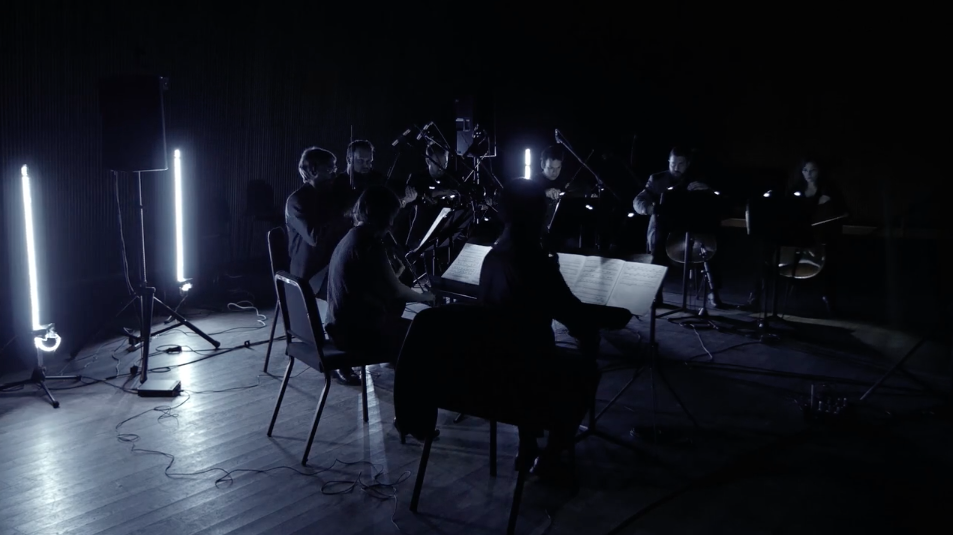
drop - for string octet and strobe lights (2015)
drop - for string octet and strobe lights (2015)
written for the JACK and MIVOS quartets
“ . . . that’s what my work is about, the collapse of everything, of meaning, of language, of values, of art, disorder and dislocation wherever you look, entropy drowning everything in sight, entertainment and technology and every four-year-old with a computer, everyone his own artist where the whole thing came from? the binary system and the computer where technology came from in the first place, you see? ” - William Gaddis, Agapē Agape
The prior text was excerpted from Gaddis’s posthumously published novel Agapē Agape, the title of which poses two different languages at an oxymoronic opposition of meanings. The first, “Agapē,” originates from the Greek religious concept of ‘selfless love,' followed by the mid-century English “Agape,” which embedding the word “gap,” carries with it the customary meaning of something cleft or opened.
The idea of the gap permeates Gaddis’s novel, which is largely influenced by the cultural history of the player-piano. The player-piano relies on gap-filled rolls to read and play music. Like Joseph Marie Jacquard’s early nineteenth-century punch-card loom, these are simplified forerunners of the binary-based systems which inhabit much of current digital technology. As with Vonnegut, player-pianos themselves were not really Gaddis’s concern. Rather, it was how the development and proliferation of these instruments undermined, as the critic Ed Park put it, “the possibility of art under the sign of commerce”. In the broadest sense, the player-piano was, for Gaddis, a means to understand and explain something much bigger: the formation and effect of capitalist modernity itself.
Gaddis’ interpretation of late capitalism is grounded in the growing resemblance between art and commerce, both of which appeared to him to be thoroughly mechanized. If the juxtaposition of terms, Agapē Agape, suggests the “wholeness” of the prior, collapsing into the latter, then “Drop” explores this deepening gap; it also refers to the dramatic formal device employed in many genres of popular electronic dance music.